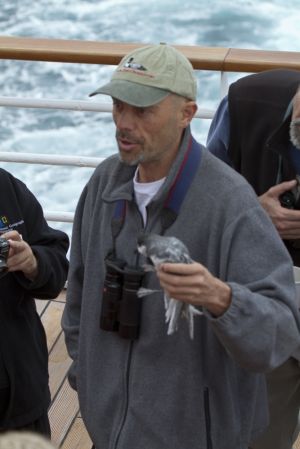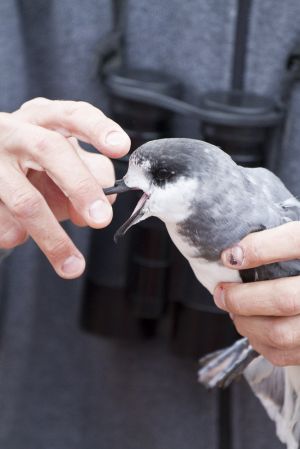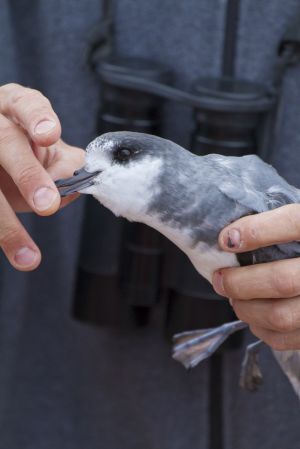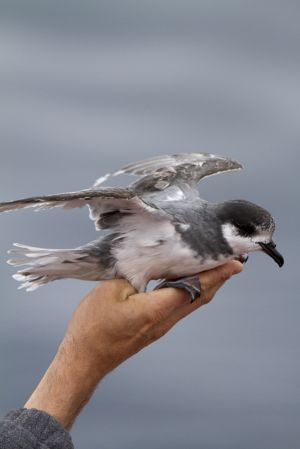One of the morning activities for the naturalists on board the National Geographic Explorer is checking the decks for ‘stowaways’. Each night, the ship operates under a ‘lights out’ policy to avoid attracting and potentially injuring seabirds. Each morning, there are a couple of birds that have landed on the deck, either disoriented by the ship’s running lights or simply cadging a lift. They usually seek refuge in the covered deck drains below the deck rails. This morning one of the stowaways is a blue petrel (Halobaena caerulea), usually a tiny dark shape seen darting in front of the bow of the ship. This bird is probably on its way to South Georgia Island, which is a nesting ground for approximately 70,000 pairs of blue petrels. For a small bird, they roam widely, and are found as far away as Australia, and off the coast of Peru.
Richard White, the resident bird expert, is in charge of rehabilitating the birds and letting them go. Some warrant an overnight stay or two in a dark covered box due to injury or shock. Some, like this blue petrel, don’t appear to be particularly grateful, nor in a hurry to leave.






